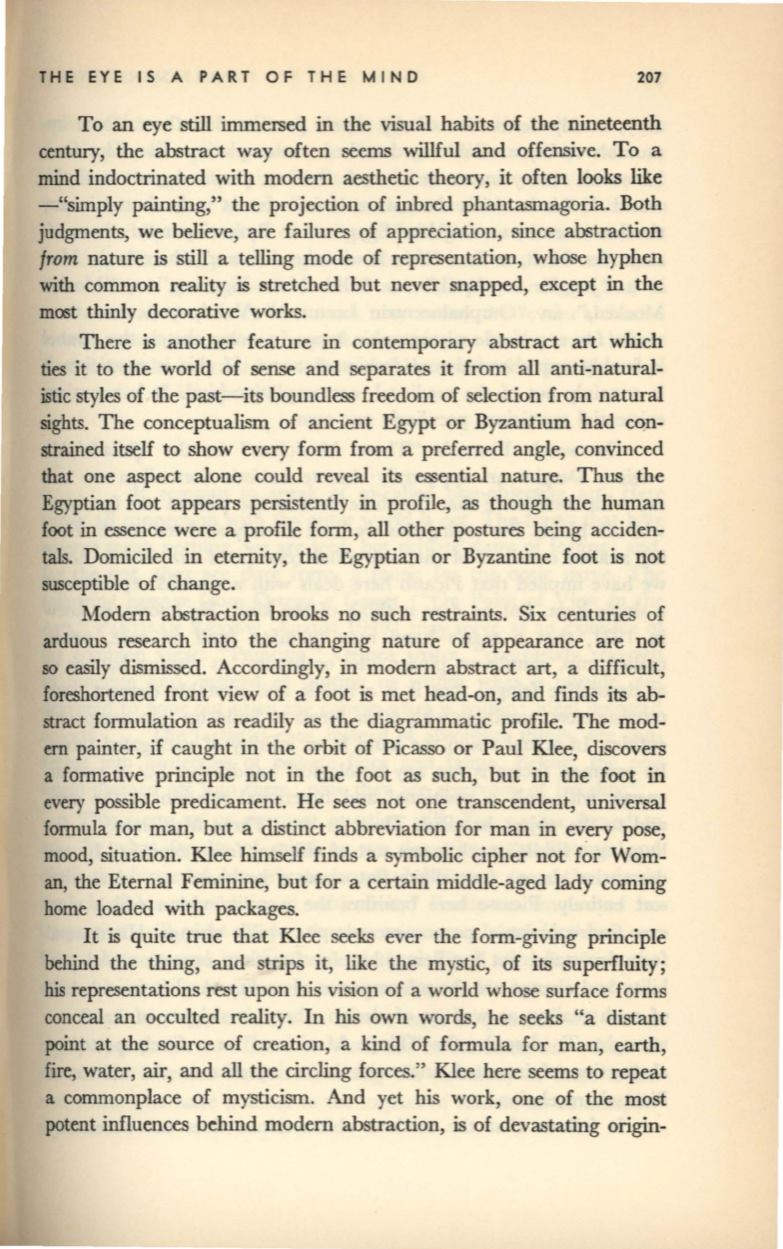
THE EYE IS A PART OF THE MIND
207
To an eye still immersed in the visual habits of the nineteenth
century, the abstract way often seems willful and offensive. To a
mind indoctrinated with modern aesthetic theory, it often looks like
-"simply painting," the projection of inbred phantasmagoria. Both
judgments, we believe, are failures of appreciation, since abstraction
from
nature is still a telling mode of representation, whose hyphen
with common reality is stretched but never snapped, except in the
most thinly decorative works.
There is another feature in contemporary abstract art which
ties it to the world of sense and separates it from all anti-natural–
istic styles of the past-its boundless freedom of selection from natural
sights. The conceptualism of ancient Egypt or Byzantium had cQn–
strained itself to show every form from a preferred angle, convinced
that one aspect alone could reveal its essential nature. Thus the
Egyptian foot appears persistently in profile, as though the human
foot in essence were a profile form, all other postures being acciden–
tals. Domiciled in eternity, the Egyptian or Byzantine foot is not
susceptible of change.
Modern abstraction brooks no such restraints. Six centuries of
arduous research into the changing nature of appearance are not
so easily dismissed. Accordingly, in modern abstract art, a difficult,
foreshortened front view of a foot is met head-on, and finds its ab–
stract formulation as readily as the diagrammatic profile. The mod–
ern painter, if caught in the orbit of Picasso or Paul Klee, discovers
a formative principle not in the foot as such, but in the foot in
every possible predicament. He sees not one transcendent, universal
formula for man, but a distinct abbreviation for man in every pose,
mood, situation. Klee himself finds a symbolic cipher not for Wom–
an,
the Eternal Feminine, but for a certain middle-aged lady coming
home loaded with packages.
It
is
quite true that Klee seeks ever the form-giving principle
behind the thing, and strips it, like the mystic, of its superfluity;
his
representations rest upon his vision of a world whose surface forms
conceal an occulted reality. In his own words, he seeks "a distant
point at the source of creation, a kind of formula for man, earth,
fire, water, air, and
all
the circling forces." Klee here seems to repeat
a commonplace of mysticism. And yet his work, one of the most
potent influences behind modern abstraction, is of devastating origin-


